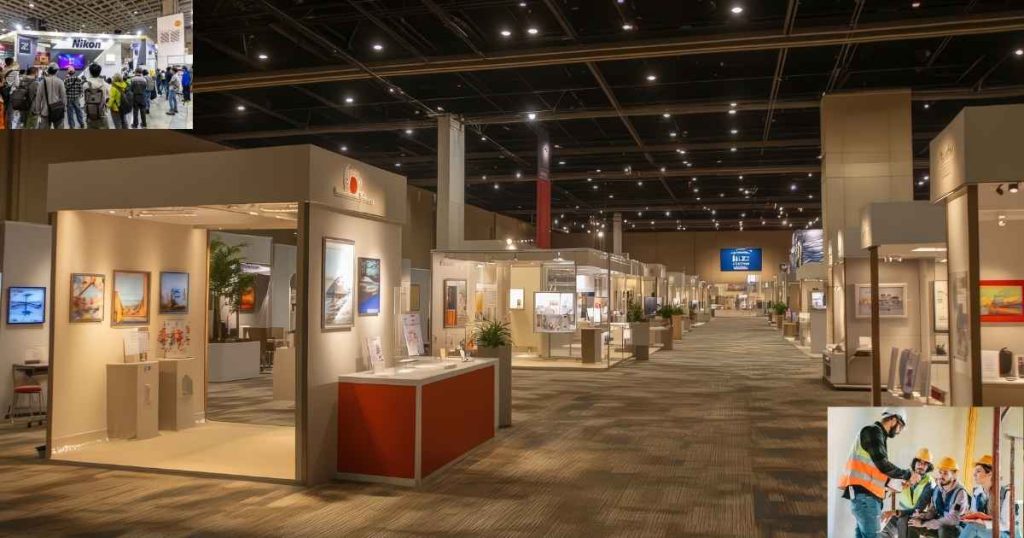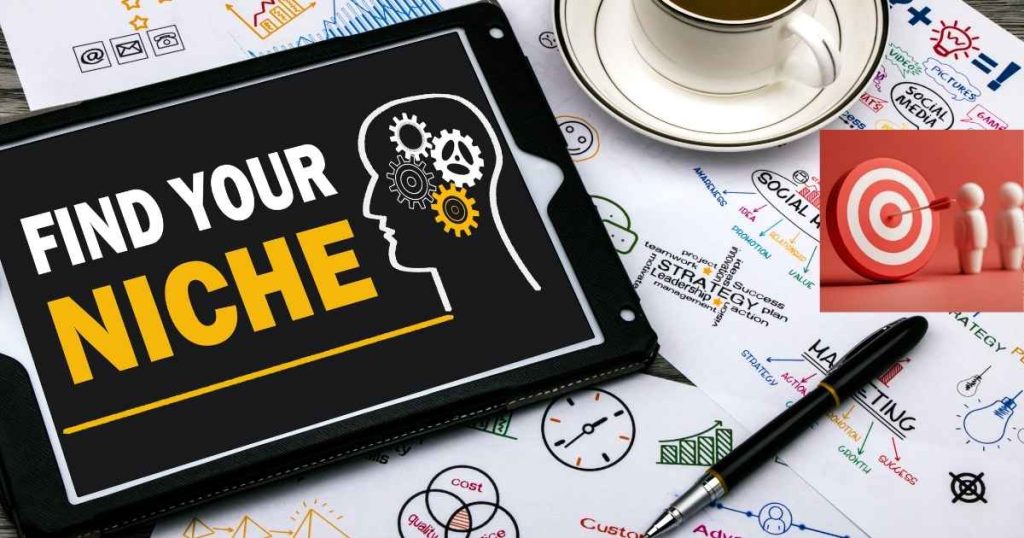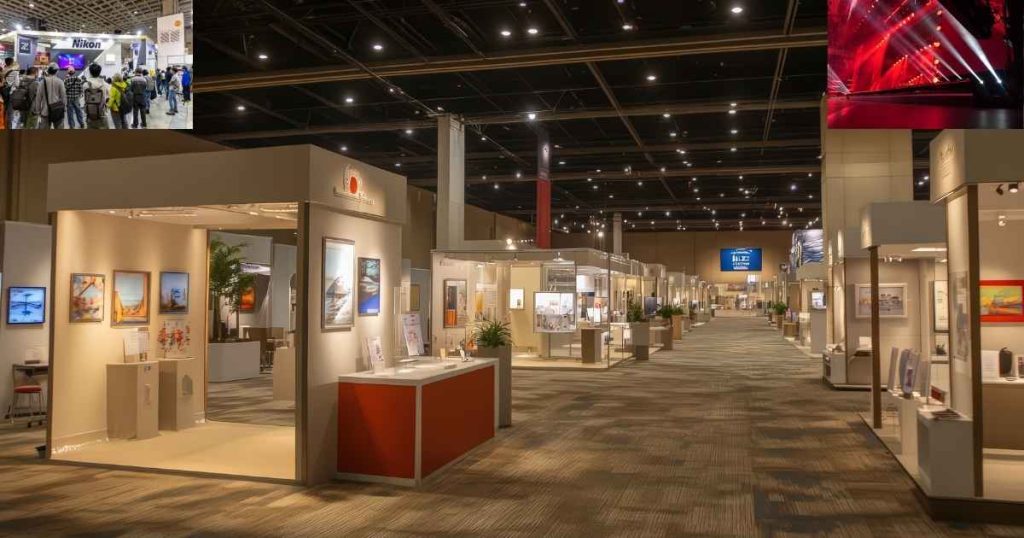In today’s competitive business world, making your brand stand out is more challenging than ever. Trade shows remain one of the most effective platforms for showcasing products, building connections, and generating leads. At the heart of every successful event presence is the trade show booth.
A trade show booth is more than a rented space at an exhibition—it’s your brand’s stage. The right booth design not only captures attention but also communicates your story, values, and unique selling points. Whether you’re a startup attending your first show or a global brand seeking a fresh look, understanding the strategies behind booth design, setup, and marketing can transform your results.
In this guide, we’ll explore everything you need to know about trade show booths, from design ideas and setup checklists to budgeting, marketing, and future trends.
Why a Trade Show Booth Matters
A trade show booth plays a central role in event success. Here’s why:
- Brand Visibility – In crowded exhibition halls, your booth is your beacon.
- Lead Generation – Nothing beats face-to-face conversations for trust-building.
- Product Demonstrations – A live product demo at your booth creates excitement.
- Competitive Advantage – A creative trade show booth design helps you stand out.
- Market Research – Talking to visitors provides real-time insights into customer needs.
In fact, according to industry reports, 81% of trade show attendees have buying authority, meaning your booth could directly influence sales decisions.
Types of Trade Show Booths
When planning, you’ll need to choose the right trade show booth setup. Different booth types serve different goals:
1. Inline Booths
- Located in a row with other booths.
- Usually 10×10 or 10×20 feet.
- Affordable and efficient, great for small businesses.
2. Island Booths
- Open on all four sides, offering 360° visibility.
- Ideal for interactive displays and larger crowds.
- Expensive but offers maximum exposure.
3. Peninsula Booths
- Open on three sides and share a wall with another booth.
- A balance between visibility and cost.
4. Double-Decker Booths
- Two levels, with an upper deck often used for private meetings.
- A custom trade show booth design that makes a bold statement.
5. Portable Booths
- Lightweight, easy to transport and assemble.
- Perfect for businesses attending multiple smaller shows.
Choosing the right booth depends on your budget, goals, and target audience.
Trade Show Booth Design Principles
Your trade show booth design must balance creativity, functionality, and branding. Here are proven design principles:
- Tell Your Brand Story
- Every element of your booth—colors, graphics, lighting—should reflect your brand identity.
- Consistency builds trust and recall.
- Maximize Visibility
- Use tall structures, hanging banners, or LED walls to attract attention from afar.
- Place your logo at eye level and above.
- Use Interactive Elements
- Touchscreens, VR headsets, product demos, or gamified activities engage visitors.
- Lighting Matters
- Spotlight key areas.
- Warm lighting for hospitality, bright lighting for product showcases.
- Space Planning
- Avoid clutter.
- Ensure enough walking space, seating areas, and demo stations.
- High-Quality Graphics
- Invest in professional designs and crisp images.
- Use short, bold messages—visitors should understand your offer in seconds.
Creative Trade Show Booth Ideas
Looking for inspiration? Here are some trade show booth ideas proven to capture attention:
- Themed Booths – Use a theme related to your product or industry.
- Immersive Experiences – VR/AR demos to showcase your product in action.
- Social Media Walls – Encourage visitors to share photos with hashtags.
- Gamified Engagement – Spin-the-wheel contests, quizzes, or scavenger hunts.
- Photo Opportunities – Fun photo booths or props that encourage social sharing.
- Hospitality Corners – Coffee stations or lounge areas to attract and retain traffic.
Renting vs. Buying a Trade Show Booth
One big decision is whether to rent or buy your booth.
Renting a Trade Show Booth
- Pros: Lower upfront cost, flexible designs, easy upgrades.
- Cons: Limited customization, long-term cost may add up.
Buying a Custom Trade Show Booth
- Pros: Fully tailored to your brand, reusable for years, cost-effective for frequent exhibitors.
- Cons: High upfront investment, requires storage and maintenance.
Portable Trade Show Booths
- Easy to set up, lightweight, and cost-effective.
- Perfect for businesses attending multiple smaller shows.
Trade Show Booth Setup Checklist
Preparation is everything. Here’s a detailed trade show booth setup checklist:
- Booth Structure – Panels, frames, flooring, and backdrops.
- Signage & Branding – Banners, posters, logo displays.
- Lighting & Electricity – Extension cords, chargers, adapters.
- Furniture – Chairs, tables, podiums, and shelving.
- Technology – Laptops, tablets, screens, VR gear.
- Product Samples – Ready-to-demo items or giveaways.
- Marketing Materials – Brochures, catalogs, business cards, QR codes.
- Lead Capture Tools – Badge scanners, digital forms, sign-up sheets.
- Staff Training – Scripts, talking points, and dress code.
- Emergency Kit – Tape, scissors, power strips, cleaning wipes.
Marketing Your Trade Show Booth
Building a booth isn’t enough—you need a marketing plan:
Pre-Show Marketing
- Announce your trade show booth display on social media.
- Email customers and partners about your location.
- Offer incentives for visiting (free samples, contests).
During the Event
- Use live demos and presentations.
- Run contests and giveaways.
- Encourage attendees to share on social media with event hashtags.
Post-Event Marketing
- Follow up with leads within a week.
- Send thank-you emails with personalized offers.
- Share highlights from your trade show booth on your website and social channels.
Cost of a Trade Show Booth
Costs vary widely depending on size, design, and services. On average:
- Small Booth (10×10 ft): $8,000 – $12,000 (design + setup).
- Medium Booth (20×20 ft): $20,000 – $40,000.
- Large Custom Booths: $50,000 – $150,000+.
Additional costs:
- Booth space rental (often the largest expense).
- Transportation and logistics.
- Staff travel and accommodation.
- Marketing materials and giveaways.
Pro Tip: Budget at least 3x your booth cost for the full event (including logistics and marketing).
Common Trade Show Booth Mistakes to Avoid
Even the best businesses can fail if they make these mistakes:
- Cluttered Displays – Too many items overwhelm visitors.
- Untrained Staff – Poor communication can lose leads.
- Weak Branding – Inconsistent colors or unclear messaging.
- No Engagement Strategy – A booth without activities feels uninviting.
- Ignoring Follow-Up – Leads are wasted if you don’t follow up.
Future Trends in Trade Show Booths
The future of trade show booth design is evolving fast:
- Sustainability – Eco-friendly materials and reusable displays.
- Hybrid Events – Integrating in-person and virtual experiences.
- Smart Booths – Digital touchpoints for personalized engagement.
- Data-Driven Design – Using analytics to optimize booth layout and engagement.
FAQs About Trade Show Booths
1. What is the standard size of a trade show booth?
The most common size is 10×10 feet, but larger spaces are available for custom setups.
2. How can I make my trade show booth stand out?
Use bold graphics, interactive displays, and unique trade show booth ideas like VR or themed experiences.
3. Is it better to rent or buy a booth?
Renting is best for occasional exhibitors; buying is better for frequent participants.
4. How much does a trade show booth cost?
A basic booth can cost around $8,000–$12,000, while large custom designs can exceed $100,000.
5. How do I market my trade show booth?
Use pre-show promotions, social media engagement, giveaways, and strong post-event follow-up.
Conclusion
Your trade show booth is more than just a physical space—it’s a reflection of your brand, strategy, and ability to connect with your audience. With the right design, setup, and marketing approach, your booth can generate leads, boost brand recognition, and deliver a strong return on investment.
Whether you choose a portable trade show booth, a custom booth design, or a rental, remember the golden rule: your booth should attract, engage, and convert visitors. In a competitive trade show environment, that’s the key to long-term success.



![High CPC Keywords for Google Ads in 2025 [Ultimate List]](https://lovedreamshub.com/wp-content/uploads/2025/09/Untitled-design-9-1024x538.jpg)


